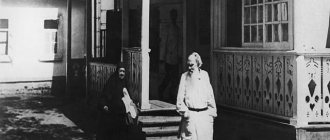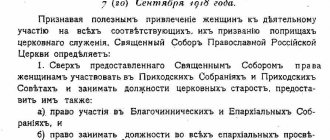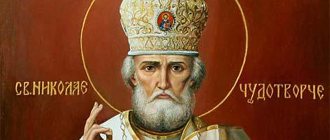Who are the Royal Martyrs
Royal Passion-Bearers, Royal Martyrs, Royal Family - this is how, after canonization, the Russian Orthodox Church calls the last Russian Emperor Nicholas II and his family: Empress Alexandra Feodorovna, Tsarevich Alexei, Grand Duchesses Olga, Tatiana, Maria and Anastasia. They were canonized for the feat of martyrdom - on the night of July 16-17, 1918, on the orders of the Bolsheviks, they, along with the court doctor and servants, were shot in Ipatiev’s house in Yekaterinburg.
Renunciation: weakness or hope?
- How to understand then the abdication of the sovereign from the throne?
- Although the sovereign signed the abdication of the throne as a responsibilities for governing the state, this does not mean his renunciation of royal dignity. Until his successor was installed as king, in the minds of all the people he still remained the king, and his family remained the royal family. They themselves understood themselves this way, and the Bolsheviks perceived them the same way. If the sovereign, as a result of abdication, would lose his royal dignity and become an ordinary person, then why and who would need to persecute and kill him? When, for example, the presidential term ends, who will prosecute the former president? The king did not seek the throne, did not conduct election campaigns, but was destined for this from birth. The whole country prayed for their king, and the liturgical rite of anointing him with holy myrrh for the kingdom was performed over him. The pious Emperor Nicholas II could not refuse this anointing, which manifested God’s blessing for the most difficult service to the Orthodox people and Orthodoxy in general, without having a successor, and everyone understood this perfectly well.
Murder of the Romanov family
The last Russian emperor, Nicholas II Romanov, abdicated the throne on March 2, 1917. After his abdication, he, along with his family, doctor and servants, were placed under house arrest in the palace in Tsarskoye Selo. Then, in the summer of 1917, the Provisional Government sent the prisoners into exile in Tobolsk. And finally, in the spring of 1918, the Bolsheviks exiled them to Yekaterinburg. It was there that on the night of July 16-17, the Royal Family was shot - by order of the executive committee of the Ural Regional Council of Workers', Peasants' and Soldiers' Deputies.
Some historians believe that the order for execution was received directly from Lenin and Sverdlov. The question of whether this is so is controversial; perhaps historical science has yet to find out the truth.
Very little is known about the Ekaterinburg period of exile of the Royal Family. Several entries in the emperor's diary have reached us; There are testimonies from witnesses in the case of the murder of the Royal Family. In the house of engineer Ipatiev, Nicholas II and his family were guarded by 12 soldiers. Essentially, it was a prison. The prisoners slept on the floor; the guards were often cruel to them; prisoners were allowed to walk in the garden only once a day.
The royal passion-bearers courageously accepted their fate. A letter from Princess Olga has reached us, where she writes: “Father asks us to tell all those who remained devoted to him, and those on whom they may have influence, that they do not take revenge for him, since he has forgiven everyone and is praying for everyone, and so that they do not avenge themselves, and so that they remember that the evil that is now in the world will be even stronger, but that it is not evil that will defeat evil, but only love.”
Those arrested were allowed to attend services. Prayer was a great consolation for them. Archpriest John Storozhev performed the last service in the Ipatiev House just a few days before the execution of the Royal Family - July 14, 1918.
On the night of July 16-17, the security officer and leader of the execution, Yakov Yurovsky, woke up the emperor, his wife and children. They were ordered to gather under the pretext that unrest had begun in the city and they urgently needed to move to a safe place. The prisoners were escorted to a semi-basement room with one barred window, where Yurovsky informed the Emperor: “Nikolai Alexandrovich, according to the resolution of the Ural Regional Council, you and your family will be shot.” The security officer shot several times at Nicholas II, and other participants in the execution shot at the rest of the condemned. Those who fell but were still alive were finished off with shots and bayonets. The bodies were taken out into the yard, loaded into a truck and taken to Ganina Yama - an abandoned Isetsky. There they threw it into a mine, then burned it and buried it.
Along with the Royal family, the court doctor Yevgeny Botkin and several servants were shot: the maid Anna Demidova, the cook Ivan Kharitonov and the valet Alexei Trupp
On July 21, 1918, during a service in the Kazan Cathedral in Moscow, Patriarch Tikhon said: “The other day a terrible thing happened: the former Sovereign Nikolai Alexandrovich was shot... We must, obeying the teaching of the word of God, condemn this matter, otherwise the blood of the executed person will fall on us, and not only on those who committed it. We know that he, having abdicated the throne, did so with the good of Russia in mind and out of love for her. After his abdication, he could have found security and a relatively quiet life abroad, but he did not do this, wanting to suffer with Russia. He did nothing to improve his situation and resignedly resigned himself to fate.”
For many decades, no one knew where the executioners buried the bodies of the executed Royal Martyrs. And only in July 1991, the presumed remains of five members of the imperial family and servants were discovered near Yekaterinburg, under the embankment of the Old Koptyakovskaya Road. The Russian Prosecutor General's Office opened a criminal case and during the investigation confirmed that these were indeed prisoners of the Ipatiev House.
After several years of research and public controversy, on July 17, 1998, the martyrs were buried in the Peter and Paul Cathedral in St. Petersburg. And in July 2007, the remains of the son of Tsarevich Alexei and Grand Duchess Maria were found.
Royal Passion-Bearers: Popular Veneration
In Orthodox circles, the attitude towards the murdered as martyrs began to spread immediately after their execution. Three days after the tragedy, Patriarch Tikhon condemned the killers in his sermon. He emphasized that the abdication of the throne was committed by the king with good intentions. The Patriarch also added that the royal martyrs could have gone abroad before their arrest. But they stayed with Russia and resignedly accepted the cross of suffering. The head of the Church blessed the clergy to perform memorial services for the murdered Romanovs.
People's veneration of the royal family was due to their attitude towards the sovereign as God's murdered anointed one. People were also shocked by the brutality of the crime. After all, even children were not spared, among whom was the sick and weak 13-year-old Tsarevich Alexei. In the Russian emigrant community, veneration was especially obvious. Various evidence of miracles performed through the prayers of the royal family appeared. For example, in the 40s, the emigrant press spread a story about the miraculous salvation of Cossacks praying to Tsarevich Alexei during the Civil War.
In 1989, on the day of remembrance of the royal family, at the place of execution, believers read “self-written” prayers for the first time. There was also a wooden cross installed there. In 1990, when the cross was replaced with a metal one, a miraculous sign occurred. In rainy weather, a bright ray of light fell on him from the sky. According to eyewitnesses, the sign lasted about 20 minutes. For a long time, the cross remained the only visible sign of veneration in the city for the murdered royal family. In 1991, a religious procession and prayer service in honor of the royal family were held for the first time in Yekaterinburg. Reverence became more and more obvious and widespread.
Canonization of the Royal Family
People abroad have been praying for the repose of the Royal Family since the 1920s. In 1981, the Russian Orthodox Church Abroad canonized Nicholas II and his family.
The Russian Orthodox Church canonized the Royal Martyrs almost twenty years later - in 2000: “To glorify the royal family as passion-bearers in the host of new martyrs and confessors of Russia: Emperor Nicholas II, Empress Alexandra, Tsarevich Alexy, Grand Duchesses Olga, Tatiana, Maria and Anastasia.”
The icon “Royal Passion-Bearers” is dedicated to the royal family, executed on July 17, 1918. The family is glorified by the Russian Orthodox Church in the guise of passion-bearers. Something special needs to be said about this face. From different attitudes towards him follows different assessments of the feat of the royal family among the people and the church.
This disagreement today, after many years of struggle for the canonization of the family in the Russian Orthodox Church and its completion in 2000, has gone deep into the multiplicity and struggle of iconographic images of the royal martyrs.
Having understood these disagreements, one can find, as it seems to me, the key to unraveling controversial, from the point of view of specialists, images and to the impossibility of coming to a single point.
Passion-bearers are those who accepted martyrdom not for their faith, like, for example, the martyrs of the first centuries, whom the pagans crucified, executed and forced to renounce Christianity, but for non-resistance to evil by violence, for voluntary endurance of passions and torments from fellow believers. This feat in ancient Rus' was considered equal to the feat of imitating Christ. His free passions, voluntary death and sacrifice.
The family of Nicholas II, shot by the Bolsheviks on July 17, 1918.
In the church, canonization in this rank is considered lower; mainly, this honor is awarded to the laity, which in itself is quite a rare occurrence, although it is with this rank that the glorification and veneration of saints generally begins in Rus' (11th century). The main admirer of the holy passion-bearers and their feat of non-resistance is the people; they consider it the highest feat.
The most striking example is Boris and Gleb, the first in Rus' to be canonized as saints in general and, in particular, as holy passion-bearers. The “Tale” about the brothers by an unknown author tells how Boris learns that his brother wants to kill him, but he decides not to resist death, despite the persuasion of his squad.
Anastasia Romanova
Boris’s younger brother, Gleb, follows the same example. In the “Tale”, the mortal feat of the brothers is devoid of any heroism; on the contrary, it emphasizes their human weakness, bitter crying before death, and reluctance to die.
In all Russian legends about the passion-bearers, the emphasis is not on the political activities of the saints, and not on their lives, but on their fulfillment of the Christian commandment of love and imitation of the Lord.
Even if some of them were weak and failures in life, the people honor them, appreciating the intentions and sacrifice of their death. This Christian idea did not exist in Byzantium, which canonized the kings for their services to Orthodoxy.
She was born only in Rus', out of love and mercy. The Russian people reverence non-resistance as the highest human feat; non-resistance passion-bearers become the leaders of all Russian saints, since their free torment and voluntary death are the complete fulfillment of gospel humility, love and meekness.
Olga Romanova
The Greek Church, which supplied metropolitans from among its representatives in Rus' in the 11th century, resisted canonization very strongly and for a long time. But the deep veneration of the saints by the Russian people broke their long resistance and canonical doubt.
The same thing happened again ten centuries later in history with the canonization of the royal family. The history of her canonization lasted more than 70 years. In 1928, the royal family was canonized as holy martyrs by the Catacomb Church*.
In 1934, those killed in the same guise were canonized by the Serbian Orthodox Church. In 1981, the Russian Church Abroad (ROCOR) glorified them as holy martyrs, including among them four servants who were shot that same night.
For the longest time, the Moscow Patriarchate could not decide on the canonization of the royal family and the face of their glorification.
Tatiana Romanova
Before the council of 2000, when the issue of their canonization was to be finally decided, two icons of the new Russian martyrs were painted: with the royal martyrs in the center and without them.
True, only the first one was finished. Finally, after a long study and research of materials by a special synodal commission, on August 20, 2000, the royal family was canonized as holy passion-bearers by the Council of the Russian Orthodox Church.
At the same time, the family servants, who were shot along with the family, were not canonized by the Moscow Patriarchate, unlike the Russian Orthodox Church (W). Due to the fact that canonization was very difficult and long, including for political reasons,
in different churches the royal family was canonized in different guises (as martyrs, as passion-bearers, as martyrs and passion-bearers). Different attitudes towards them in the church and people are reflected in numerous iconographic images.
Maria Romanova
There are already about a hundred different images that reflect one or another icon painter’s depiction of the feat of the royal family. The first icons with their images were painted abroad and from there they came to Russia.
Then icons of the royal passion-bearers began to appear, painted by Russian icon painters. We will look at only two images from this set, which are interesting as variants of semantic accents expressed in the plot depiction of the passion-bearers and in the color scheme of their spiritual image.
The main thing when painting an icon is its recognition: at first glance it should be clear what kind of icon is in front of us. We can name three features by which you recognize the icon of the royal passion-bearers: the presence of the entire family on the icon;
the presence of a cross as a symbol of their martyrdom and victory; an abundance of red - the color of fiery faith, martyrdom, royalty and Easter joy at the same time.
From this point of view, the first icon is more consistent with these requirements: it is simple, recognizable, laconic, has simple color schemes, generally recognized in iconography as symbols of martyrdom, purity and uncreatedness.
Many experts note some canonical inaccuracies in the image: for example, the Tsar and Princess Tatiana hold the cross with their left hands, although it should be held with their right. The queen does not have a cross at all. In the foreground is Tsarevich Alexei, and not the Tsar, as the head of the family. Other inaccuracies are also noted.
But, in my opinion, these inaccuracies are compensated by the exact color scheme, which is the main one in the icon. The entire icon is made in the main iconographic colors: red, white and gold. The plot itself fades into the background. The icon places emphasis on red - the color of martyrdom, sacrifice and royalty of the family.
Some elements of clothing are also made in red, which emphasizes their personal sacrifice. Red crowns are both a symbol of royalty and martyrdom.
The same power is possessed in the icon by the White color, the color of Uncreatedness and Eternity. It symbolizes holiness, righteousness and purity of souls. The white vestments of all members of the royal family merge into a single image, making the entire family an indivisible whole and the center of the composition.
The main colors of the icon are complemented by gold color - the color of Divine grace. The gold of the halos and the golden assists with which the clothes of the passion-bearers are drawn emphasize the Divinity of the Eternal Life in which they reside.
Icon "Royal Passion-Bearers"
The green color of the earth affirms the joy of life, faith in the Revival of Russia, for which they shed blood. Above all the images, consecrating them, is the image of the Mother of God “Sovereign”, found in the year of the Tsar’s abdication from the throne.
The image on the second icon was designed differently. The basis of the icon is the subject, not the color. Each figure was drawn very carefully, to the point of copying, for example, the military uniforms of the Tsar and Tsarevich, the sanitary clothes of the Tsarina and her eldest daughters Tatiana and Olga - sisters of mercy. The clothes of the younger sisters are quite secular, emphasizing that they did not perform any service, but were at home. This style is closer to Catholic writing, since it is close to the earthly, in contrast to the first image, which emphasizes the symbolic.
The king is the center of the composition. But the clothes are designed in such a way that each family member looks separate; their unity is emphasized not by integrity and color scheme, but by grouping. The martyrdom is emphasized by the red robe of Tsarevich Alexei, the only one dressed in this color. Royalty is emphasized by crowns.
The main background is gold and green. The first indicates the Divinity of Eternal Life, the second indicates Rebirth and new life. The earth in the icon is painted in a dark blue heavenly color, which is reflected in the boots and clothing of the female figures. Behind the abundance of details and local colors on the icon, the laconicism of the image is lost, since they draw a lot of attention to themselves, hiding the main meaning of the feat.
But that's my personal opinion. Anyone who wants to get acquainted with the iconography of the royal martyrs can find their images from monarchical to marginal, and choose from them the one that is closer in spirit. Everyone is also free to have their own interpretation of the images, because it opens up to everyone in their own way.
Note: * The Catacomb or True Orthodox Church (TOC) are representatives of the Russian clergy and communities that do not recognize the jurisdiction of the Moscow Patriarchate, accusing it of collaborating with communist authorities.
Tina Guy
Interesting? Share information!
Why do we honor the Royal Passion-Bearers?
Archpriest Igor FOMIN, rector of the Church of the Holy Blessed Prince Alexander Nevsky at MGIMO:
“We honor the royal family for their devotion to God; for martyrdom; for giving us an example of real leaders of the country who treated it like their own family. After the revolution, Emperor Nicholas II had many opportunities to leave Russia, but he did not take advantage of them. Because he wanted to share the fate with his country, no matter how bitter this fate was.
We see not only the personal feat of the Royal Passion-Bearers, but the feat of all that Rus', which was once called leaving, but which is in fact abiding. As in 1918 in the Ipatiev House, where the martyrs were shot, so here, now. This is a modest, but at the same time majestic Rus', in contact with which you understand what is valuable and what is of secondary importance in your life.
The royal family is not an example of correct political decisions; the Church glorified the Royal Passion-Bearers not for this at all. For us, they are an example of human attitude towards the ruler towards those over whom he is placed - towards the people.”
Prayers
Troparion, tone 4
Today, faithful people, let us brightly honor/ the seven honorable royal passion-bearers,/ Christ’s one home Church:/ Nicholas and Alexander,/ Alexy, Olga, Tatian, Mary and An Astasia./ For you, you are not afraid of many different bonds and sufferings,/ death comes from those who fight against God and the desecration of the body was accepted/ and boldness towards the Lord in prayer was improved./ For this reason let us cry out to them with love:/ O holy passion-bearers,/ listen to the voice of repentance and the groaning of our people,/ Confirm the Russian land in love for Orthodoxy, / save from internecine warfare ,/ ask God for peace // and great mercy for our souls.
Kontakion, tone 8
Chosen by the King of those who reign and the Lord of lords/ from the lineage of the kings of Russia, the blessed martyr/ received mental torment and bodily death for Christ/ and crowned with heavenly crowns/ to you , as our merciful patron, / we cry out with love and gratitude: / Rejoice, royal passion-bearers ,// Diligent prayer for Holy Rus' before God.
Greatness
We magnify you,/ holy royal passion-bearers,/ and honor your honest sufferings,// which you naturally endured for Christ.
Icon of the Royal Martyrs
Traditionally, icon painters depict the Royal Passion-Bearers without a doctor and servants, who were shot along with them in Ipatiev’s house in Yekaterinburg. We see on the icon Emperor Nicholas II, Empress Alexandra Feodorovna and their five children - princesses Olga, Tatiana, Maria, Anastasia and the heir Alexei Nikolaevich.
In the icon, the Royal Passion-Bearers hold crosses in their hands. This is a symbol of martyrdom, known from the first centuries of Christianity, when followers of Christ were crucified on crosses, just like their Teacher. At the top of the icon two angels are depicted; they carry the image of the “Sovereign” icon of the Mother of God.
Blessed marriage?
Emperor Nicholas II was born on May 19, 1868 in the family of the influential ruler Alexander III. Throughout his life, the last ruler of the Romanov dynasty often recalled the date of his birth. On this day, the Church honors the memory of Job the Long-Suffering, one of the most famous figures in Old Testament history.
Like Saint Job, Nicholas II had to endure many sorrows and losses. But they strengthened him spiritually.
His wife, Empress Alexandra (in Germany she was called Alice, received her second name after accepting Orthodoxy) - was the daughter of Duke Ludwig IV of Hesse and the granddaughter of Queen Victoria of England. German by birth and Lutheran by religion, she consciously converted to Orthodoxy and sincerely fell in love with her husband’s country.
November 1894 was significant for them: Nicholas II became emperor, and 25 days later they and Alexandra got married.
During 1895-1901, they had four daughters: Olga, Tatyana, Maria and Anastasia. But the parents and people themselves were waiting for an heir.
In 1904, the long-awaited son Alexei was born. This happened exactly a year after Emperor Nicholas glorified St. Seraphim of Sarov as a saint.
Together with his family, the sovereign made a pilgrimage to Sarov, during which they prayed especially fervently. It is not difficult to guess what the royal martyrs asked God and Seraphim of Sarov for. The born son was the answer to their prayers.
What is “Russian Golgotha”?
On March 22, 1917, the arrest of the royal family began, which would last until July 17, 1918. During these almost one and a half years, the family will live more spiritually than in previous decades. Many people call this difficult path the Russian Golgotha. Why? More on this later.
The family spent almost five months in Tsarskoe Selo. The constraints at that time were not particularly noticeable. The spouses could only see each other at meals and always communicate in Russian. But at the same time, all family members prayed together and attended services. There was enough time for walking and reading books.
During this period, the Provisional Government tried to investigate the activities of the emperor, but did not find anything immoral or vicious. It would have been logical to let the family go, but instead they were transported to Tobolsk.
The number of letters and visits to the temple decreased. But, as the diary entries testify, neither the parents nor the children stopped praying, confessed and received communion from time to time, and most importantly, they humbly endured their imprisonment.
The only thing that Nicholas II could not come to terms with was the consequences of his abdication. Diaries and eyewitness accounts partially convey the depth of his experiences.
April-May 1918 marked the beginning of the last stage of their ascent to the Russian Golgotha. The family was transported to Yekaterinburg, where they settled in the Ipatiev House. According to eyewitnesses, all family members understood how their imprisonment would end. Even the younger Alexei once said: If they kill, at least they don’t torture.
On July 14, 1918, their last Liturgy took place, and on the night of July 16-17, a tragic murder took place. Along with members of the imperial family, they also shot people who helped them and shared the bitterness of exile - a doctor, a maid, a footman, a cook...










